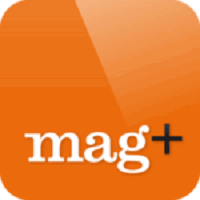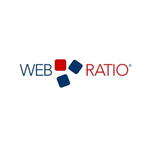Description

Mag+ Application Development

WebRatio
Comprehensive Overview: Mag+ Application Development vs WebRatio
Sure, let's delve into a comprehensive overview of both Mag+ Application Development and WebRatio, focusing on their primary functions, target markets, market share, user base, and key differentiating factors.
Mag+ Application Development
a) Primary Functions and Target Markets
- Primary Functions: Mag+ is a digital publishing platform that allows users to create interactive digital content for mobile devices without writing a single line of code. It is particularly known for creating high-quality digital magazines and applications with multimedia elements such as images, videos, and interactive infographics.
- Target Markets: The primary target markets for Mag+ are publishers, media companies, and marketing agencies that want to extend their content to mobile devices efficiently. It also caters to enterprises and organizations looking to develop engaging and interactive communication tools.
b) Market Share and User Base
- Market Share: Mag+ is a niche player in the digital publishing space. It primarily targets businesses looking for specialized tools for creating interactive publications rather than broad application development.
- User Base: The user base tends to be smaller compared to general-purpose app development platforms, comprising primarily of publishing houses, design agencies, and marketing departments within larger organizations.
c) Key Differentiating Factors
- Focus on Interactivity: Mag+ emphasizes creating visually appealing and interactive content specifically tailored for mobile devices.
- Specialization in Publishing: Unlike broader app development platforms, Mag+ specializes in digital publishing, making it an ideal choice for media companies and content creators.
- Ease of Use: With a focus on enabling non-developers to create apps, it balances functionality with usability, ensuring that users with design skills can produce apps without needing deep programming knowledge.
WebRatio
a) Primary Functions and Target Markets
- Primary Functions: WebRatio is a low-code platform for rapid application development, allowing users to build web, mobile, and enterprise applications efficiently. It supports full-stack development with integrated deployment capabilities.
- Target Markets: The platform primarily targets enterprises looking to accelerate their digital transformation processes. It is particularly appealing to industries such as banking, insurance, manufacturing, and healthcare for bespoke internal applications and customer-facing solutions.
b) Market Share and User Base
- Market Share: WebRatio holds a moderate position in the global low-code development landscape. It's generally more recognized in regions where agility in enterprise digital solutions is critical.
- User Base: The user base consists of mid-to-large size enterprises looking for platforms that can integrate with existing IT infrastructures and facilitate the rapid development of complex applications.
c) Key Differentiating Factors
- Low-Code Development: WebRatio’s emphasis on low-code development allows faster production cycles, enabling businesses to respond quickly to market demands.
- Enterprise Integration: It offers robust features for integrating with various enterprise systems, which is crucial for large organizations with complex IT landscapes.
- Scalability and Customization: WebRatio provides capabilities to scale applications and tailor them to specific organizational needs, appealing to sectors requiring bespoke solutions.
Comparative Summary
- Market Focus: Mag+ is strongly focused on digital publishing and media content, while WebRatio is tailored for general enterprise application development.
- User Experience: Mag+ offers a more graphic design-oriented experience, while WebRatio provides a hybrid experience that combines GUI-based development with the ability for custom coding, appealing to enterprise developers and IT teams.
- Market Penetration: WebRatio might have a larger penetration in traditional enterprise markets, while Mag+ excels in specific media and marketing niches.
In conclusion, while both platforms offer valuable application development capabilities, they cater to different industry needs and user bases, each with its own set of strengths and specialties.
Contact Info

Year founded :
Not Available
Not Available
Not Available
Not Available
Not Available

Year founded :
2001
+39 02 4548 5980
Not Available
Italy
http://www.linkedin.com/company/webratio
Feature Similarity Breakdown: Mag+ Application Development, WebRatio
Sure, here's a feature similarity breakdown for Mag+ Application Development and WebRatio:
a) Core Features in Common
-
Visual Development Environment:
- Both Mag+ and WebRatio offer a visual development environment that allows users to create applications through a drag-and-drop interface without extensive coding knowledge.
-
Cross-Platform Support:
- They support development for multiple platforms. Mag+ typically focuses on mobile applications (iOS and Android), whereas WebRatio supports mobile as well as web applications.
-
Integration Capabilities:
- Both platforms allow for integration with third-party services and APIs. This is essential for modern applications that need to interact with various online services and databases.
-
Responsive Design:
- Both tools emphasize creating applications with responsive design principles that ensure usability across different device sizes and orientations.
-
User Management:
- They provide features for managing users and roles within the application, allowing for customized user experiences and permissions based on user type.
b) User Interface Comparison
-
Mag+:
- Highly intuitive and focused on the needs of designers and publishers. The interface is tailored to be user-friendly for creatives, with a big emphasis on layout and content presentation.
- Offers a "what you see is what you get" (WYSIWYG) editor, which makes it straightforward for those involved in designing digital publications.
-
WebRatio:
- Its interface is more oriented towards developers and IT professionals, with detailed control over the application's logic and data flow.
- It offers a comprehensive environment that includes numerous technical tools and settings, which can appeal more to users with technical backgrounds.
c) Unique Features
-
Mag+:
- Primarily designed for digital publishing solutions. It excels in features for creating interactive magazines, e-books, and other forms of digital publications.
- One of its standout features is the seamless integration of interactive elements like videos, slideshows, and animations directly within digital publication layouts.
-
WebRatio:
- Strong focus on Business Process Management (BPM), enabling users to model business processes and create applications that solve complex business needs.
- Offers a feature-rich environment for creating enterprise-grade applications, including functionalities such as workflow management and process automation.
Overall, while both platforms offer robust application development environments, Mag+ is uniquely positioned for digital publishing content, while WebRatio provides extensive features for business process-oriented applications. These distinct orientations influence their core functionalities, making them suitable for different user needs.
Features

User Interface Design
Content Management
Performance Optimization

User Experience
Integration Capabilities
Deployment & Maintenance
Application Development
Best Fit Use Cases: Mag+ Application Development, WebRatio
When evaluating tools like Mag+ Application Development and WebRatio for application development, it's important to understand their unique strengths and how they cater to different business needs and scenarios. Here's a detailed description of their best fit use cases:
a) Mag+ Application Development:
Types of Businesses or Projects:
-
Publishing and Media Companies: Mag+ is specifically tailored for digital publishing. It's ideal for businesses that publish magazines, catalogs, or any content-heavy materials and want to create interactive and visually rich digital editions.
-
Marketing and Advertising Agencies: Agencies that need to create engaging promotional content can leverage Mag+ to develop interactive marketing materials that can be easily consumed on mobile devices and tablets.
-
Corporate Communications: Large corporations can use Mag+ to develop internal communications or training materials that are interactive and engaging, helping to improve information retention among employees.
-
Educational Institutions: Schools and universities looking to digitize course content can benefit from Mag+'s ability to create interactive and multimedia-rich educational materials.
b) WebRatio:
Preferred Scenarios:
-
Enterprise-level Application Development: WebRatio is suitable for businesses that require complex, enterprise-grade web and mobile applications. It is particularly strong in process-driven solutions, making it a good fit for businesses needing ERP, CRM, or similar business process applications.
-
Business Process Management (BPM): Companies that require custom business process automation and management will find WebRatio's support for BPM tools invaluable. It allows for rapid development of systems that streamline business processes.
-
Organizations Prioritizing Low-Code Solutions: For organizations that want to reduce their development time and rely less on hand-coding, WebRatio provides a low-code platform that speeds up the development process and facilitates easy maintenance.
-
Agile Development Environments: Companies working in agile settings and requiring frequent iterations and updates to their applications can take advantage of WebRatio’s flexibility and rapid prototyping capabilities.
d) Industry Verticals and Company Sizes:
-
Mag+ is particularly well-suited for industries where content presentation and user engagement are critical. Publisher-driven sectors, marketing teams within medium to large enterprises, or any industry relying heavily on interactive content for consumer engagement will benefit the most. Small to medium-sized companies looking to produce high-quality digital publications can also leverage Mag+.
-
WebRatio, on the other hand, caters to a broader range of industry verticals, particularly those where workflow efficiency, custom business logic, and enterprise system integrations are essential. This includes sectors like manufacturing, financial services, healthcare, and logistics. It's often a better fit for larger companies or businesses with complex system requirements due to its enterprise-focused capabilities.
Overall, choosing between these platforms largely depends on the type of application needed, the level of complexity, and the industry requirements. While Mag+ excels in delivering visually appealing, content-driven applications, WebRatio shines in scenarios demanding robust process automation and integration capabilities.
Pricing

Pricing Not Available

Pricing Not Available
Metrics History
Metrics History
Comparing teamSize across companies
Conclusion & Final Verdict: Mag+ Application Development vs WebRatio
To provide a conclusion and final verdict on Mag+ Application Development and WebRatio, several factors must be considered: cost, ease of use, features, flexibility, scalability, support, and the specific needs of the user or organization.
a) Which product offers the best overall value?
Best Overall Value: The best overall value depends heavily on the specific needs and goals of the user or organization:
-
Mag+ Application Development offers robust capabilities for creating rich, interactive digital publications and is particularly valuable for businesses focused on digital publishing and media sectors. It provides a streamlined process for designing, building, and deploying content-rich applications, making it an excellent choice for those with a primary focus on content design and user experience.
-
WebRatio is better suited for enterprises looking for low-code solutions to develop complex enterprise-grade web and mobile applications. It's valued for its ability to create highly customized solutions with ease and speed, which is crucial for businesses that need more functionality beyond basic content publication.
b) Pros and Cons of Each Product:
Mag+ Application Development:
-
Pros:
- Intuitive design specifically for digital content publishers.
- Exceptional tools for creating multimedia-rich and interactive content.
- Streamlined publishing process ideal for magazines, e-books, and brochures.
-
Cons:
- Limited in terms of features for complex applications with advanced backend requirements.
- Best suited for a specific niche industry, which might not meet the needs of enterprises needing wider application development features.
WebRatio:
-
Pros:
- Powerful low-code platform for developing complex and customized enterprise-grade applications.
- Flexibility to design for both web and mobile environments.
- Good support for integrating business processes and data within applications.
-
Cons:
- May have a steeper learning curve compared to Mag+ for those specifically interested in digital content publishing.
- Potentially over-engineered for projects focused solely on digital content creation without complex interactions.
c) Recommendations for Users Trying to Decide:
-
Define Your Needs: Clearly understand the primary purpose of your application. If your focus is on creating and distributing digital content like magazines, e-books, or multimedia, Mag+ is likely your best option.
-
Consider Complexity and Scalability: If you require an application that needs to scale with integrated business processes, data management, and potentially serves multiple purposes beyond content publication (e.g., CRM interfaces, enterprise resource planning tools), then WebRatio is more appropriate.
-
Budget and Resource Allocation: Consider the total cost of ownership, including potential training and support costs. Mag+ may be more cost-effective for straightforward digital content applications, while WebRatio could be a worthwhile investment for complex enterprise applications with a longer lifecycle.
-
Ease of Use vs. Flexibility: Determine whether ease of use (Mag+ being more straightforward for its niche) or flexibility and functionality (WebRatio offering comprehensive low-code capabilities) is more important for your team and objectives.
Ultimately, the decision will depend on your specific project requirements, available resources, and the long-term goals of your application.
Add to compare
Add similar companies




